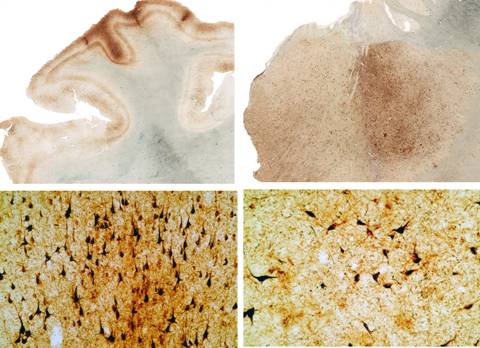UNITE Case Studies
Case Studies
Pathology, the scientific study of the nature of disease and its causes, is the bedrock of medical research. Usually, before a disease can be diagnosed in living people or treated, it must be understood pathologically.
In 2009, only 51 cases of CTE had been studied pathologically and published in medical literature. By 2018, this number has risen to over 320 cases of CTE. Five years later in 2023, that number is over 660 cases.
Much can be learned by combining pathology with a retrospective examination of the person’s life and clinical symptoms. Please review the case studies below. If the case is identified by name, the family has given explicit permission to share their story with the hope of increasing understanding of this devastating disease. For additional insight into our brain donors, read our Donor Stories.
Peer-reviewed, Published Case Study: Mez J, Solomon TM, Daneshvar DH, Stein TD, McKee AC. Pathologically Confirmed Chronic Traumatic Encephalopathy in a 25-Year-Old Former College Football Player. JAMA Neurol. 2016 Mar; 73(3):353-5.View Related Profiles. PMID: 26747562; PMCID: PMC4792748; DOI: 10.1001/jamaneurol.2015.3998;.
Lou Creekmur
Lou Creekmur, a former Detroit Lions lineman and eight-time Pro Bowl player, died in 2009 from dementia. The CSTE examined Mr. Creekmur’s brain and found substantial evidence of CTE. There was no evidence of Alzheimer’s disease or of any other neurodegenerative disease. Mr. Creekmur was the tenth former NFL player diagnosed with CTE and the most advanced case of CTE found in a football player to date at the CSTE.

Figure 7 shows dense tau deposits (brown) in the insula (1), temporal (2) and frontal (3) cortices, amygdala (4) and hippocampus (5) in the absence of beta amyloid plaques. A normal control brain would not show any brown discoloration.
Read more about Lou Creekmur
Washington Post | CTE is a real risk for football players
Press Release | Member of NFL Hall of Fame Diagnosed with Degenerative Brain Disease
Mike Borich
Mike Borich, a former college football wide receiver, died of a drug overdose in February 2009. Borich played for Snow College and Western Illinois University in the 1980s, and was later a football coach for the NFL’s Chicago Bears and multiple division 1 college teams. Mr. Borich was the first advanced case of CTE discovered in a college football player who did not play professionally. Mr. Borich also represents the first case of CTE diagnosed in a wide receiver.

Figure 8: Normal control brain tissue and Mike Borich brain tissue

Figure 9: Normal control brain tissue and Mike Borich brain tissue
Photomicrographs of normal control brain (top panels) and the brain of Mike Borich (bottom panels), immunostained for tau protein (brown) and counterstained with cresyl violet (purple). Virtually no tau deposition is found in the normal control brain whereas numerous tau containing neurofibrillary tangles are found in individual nerve cells of the brain of Mike Borich.
Read more about Mike Borich
New York Times | Concussion Trauma Risk Seen in Amateur Athlete
Press Release | First Former College Football Player Diagnosed with CTE
John Grimsley
The first deceased athlete examined by the CSTE researchers was John Grimsley, former linebacker for the Houston Oilers and Miami Dolphins, who died in February 2008 at the age of 45 from an accidental gunshot wound. Examination of Mr. Grimsley’s brain confirmed extensive CTE. In both sets of photographs, below, the brain tissue has been immunostained for tau protein, which appears as a dark brown color.
Read the 15 year anniversary article here


Read more about John Grimsley
New York Times | 12 Athletes Leaving Brains To Researchers
Tom McHale
Former Tampa Bay Buccaneer Tom McHale died in 2008 at age 45 from a drug overdose. Mr. McHale, Cornell University graduate, was a successful restaurateur and husband and father of three boys. He was the sixth former NFL player to be diagnosed post-mortem with CTE.
Read the 15 year anniversary article here


Read more about Thomas McHale
New York Times | Sixth N.F.L. Player’s Brain Is Found to Have Damage
Press Release | Boston University School of Medicine announces New Findings Linking Football and Progressive Brain Damage
John Doe
John Doe (the family has asked to keep his identity private) was a multi-sport athlete who suffered multiple concussions in high school football. Analysis of Mr. Doe’s brain revealed the earliest evidence of CTE ever recorded.

Read more about youth football head trauma
Centers for Disease Control and Prevention | Comparing Head Impacts in Youth Tackle and Flag Football
Press Release |Boston University School of Medicine Announces New Findings Linking Football and Progressive Brain Damage
Our Recent Publication | Decreased myelin proteins in brain donors exposed to football-related repetitive head impacts
